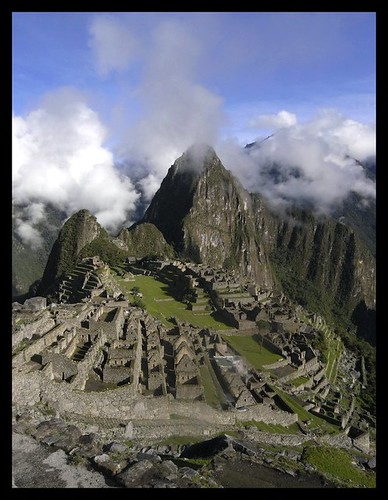Some say it is one of the most energy on the planet. Others assert that the ancient lost city of the Inca gods. The reality is that the Inca fortress of Machu Picchu is perched between the majestic Andes mountains, flanked by mountains, old and new (Machu and Huayna Picchu) emerging from the Peruvian jungle. More than five centuries of history surrounded by a halo of mystery this magical corner of the planet, which some historians believe was the resting place of the highest nobility of the Inca empire, with its capital in the city of Cuzco (Quechua Qosco, «navel the world «).

Photography by kudumomo
Machu Picchu is now one of the seven new wonders of the modern world, and any traveler can assert in this election just inside the first entrance to the fortress. In the midst of Peruvian jungle and 2,300 meters above sea level, some of the Inca ruins are preserved intact even today, thanks to improved technique and sharpen Inca fit the huge parts of the quarry on each other with its peculiar trapezoidal shape, which in some cases may even remember the way the Egyptians built, if you notice the slight tilt in most of the walls.

Photography by ShashiBellamkonda
After discovering the pre-Columbian cultures in the Sacred Valley of the Incas through the ruins of Pisac, Ollantaytambo, Maras and Moray Chincheros. All with his typical artisan markets, where farmers still work the alpaca wool and natural colors from plants and animals of this spectacular Andes, we travel several hundred miles along a secondary road that leads plateau by several mountain ranges from the region of Puno to Cuzco, where we Perurail regular line, a train that leads to the town of Aguas Calientes at the foot of Machu Picchu.
The immensity of the Andes and the steppe leaves you breathless. A pure subsistence economy, where all that matters is being able to get up the next day and where agriculture and livestock are the stars of the day to day, in houses built by the farmers’ own hands from clay , adobe or straw to cover the roof and protect the humble houses of the cold, harsh winter. Still works the land with the hoe, and peasant women washing their clothes in the few rivers that keep the flow at this time because we are in the dry season and many of them have lost its way.
The alpaca (Andean range of the flame with the longest neck) and the vicuña adorn the landscape of the Andean steppes and their presence is also common in the dishes of Peruvian cuisine, one of the most diverse and recognized the world today, thanks the international promotion of one of its most famous chefs, Gaston Acurio, that has placed his country among the five most popular on the planet when sitting at a table and enjoy specialties such as chili chicken, ceviche, the beef tenderloin, the alpaca steak or internationally known as «pisco sour».

Photography by fortherock
Good luck!
2 Responses to “Machu Picchu – Lost City of the Incas”
Leave a Reply
You must be logged in to post a comment.
marzo 18th, 2012 at 4:57 pm
[…] Bingham, left the three brothers Ayar, cited in one of the legends about the founding of the Inca […]
marzo 18th, 2012 at 6:01 pm
[…] because it was straw. In the far east, the large solar disk and near him were the mummies of the Incas who ruled […]